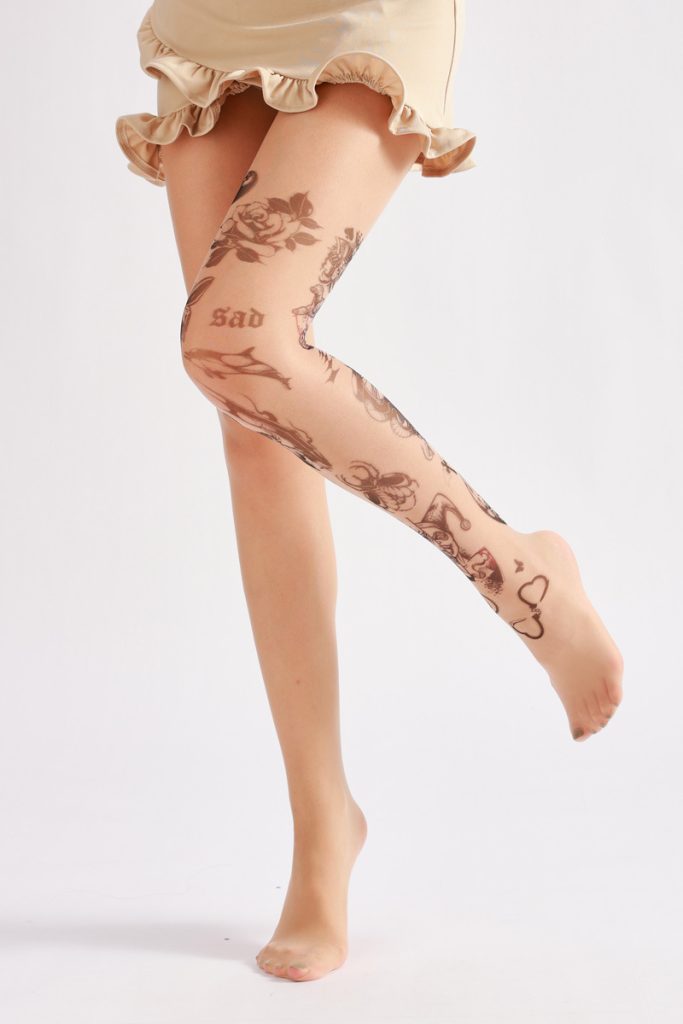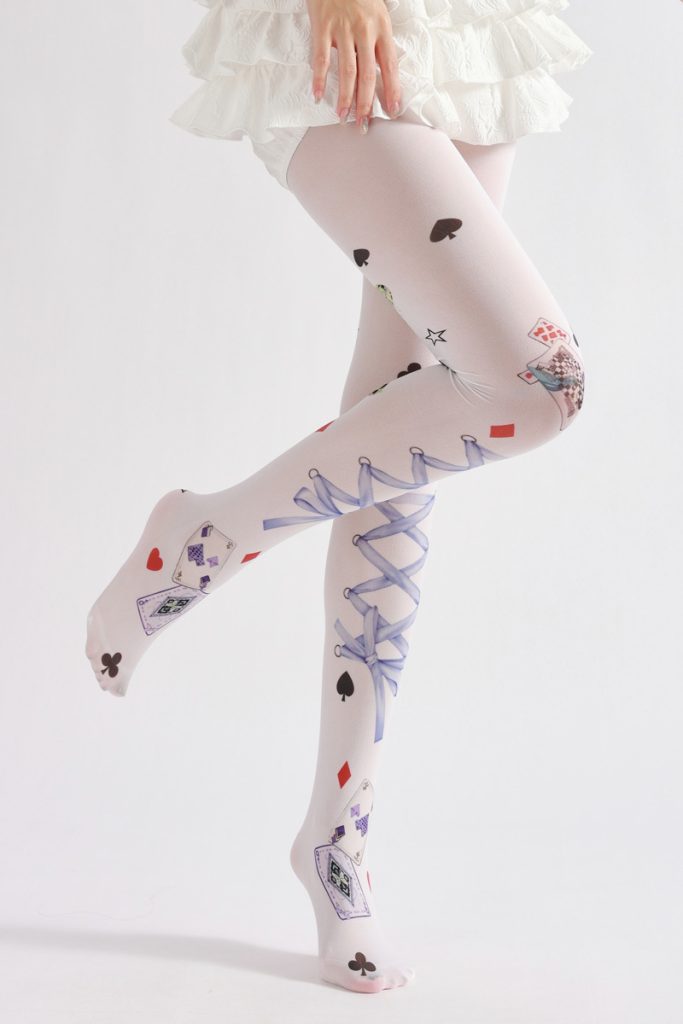
I. Introduction
Cosplay has become a global phenomenon, allowing enthusiasts to bring their favorite characters to life through costumes and accessories. Among the many elements that contribute to a successful cosplay, socks play a crucial role. They not only complete the look but also add an extra layer of authenticity and creativity. This article will explore the development of cosplay socks, from their humble beginnings to their current status as an integral part of the cosplay world.
II. Early Beginnings
A. Traditional Costumes
In the early days of cosplay, socks were often a simple part of traditional costumes. For example, in historical re – enactments, socks were used to protect the feet and legs. These socks were typically made from natural materials such as cotton or wool and were designed to be functional rather than decorative. They were basic in design, with a simple color and no elaborate patterns.
B DIY and Homemade Cosplay
As cosplay started to gain popularity, enthusiasts began to create their own costumes. This often involved making socks from scratch or modifying existing ones. DIY cosplay allowed for greater creativity and customization. For instance, people would use fabric paints, embroidery, or sewing techniques to add unique designs to their socks. These homemade socks were often inspired by the characters they were cosplaying and helped to bring the costumes to life.
III. The Rise of Cosplay
A. Anime and Manga Influence
The popularity of anime and manga had a significant impact on cosplay sock development. Anime characters often had distinct sock styles, such as knee – high socks, thigh – high socks, or ankle – length socks. These styles became popular among cosplayers, who wanted to replicate the look of their favorite characters. Anime – inspired socks were often brightly colored, with patterns and designs that were unique to the characters. For example, a character from a popular anime might have socks with a specific pattern that was associated with their personality or role in the story.
B Video game and movie adaptations
Cosplay based on video games and movies also contributed to the development of cosplay socks. These games and movies often had characters with unique sock designs. For example, characters in fantasy games might have socks with elaborate embroidery or special symbols. Cosplayers would try to recreate these designs in their cosplay socks, using materials and techniques that were similar to those used in the original media.
IV. Technological advancements
A Fabric and material innovation
The development of new fabrics and materials has had a significant impact on cosplay socks. Synthetic materials such as nylon, polyester, and spandex have become popular due their durability, stretchability, and ability to hold color. These materials can be used to create socks that are more comfortable and long – lasting. Additionally, new fabrics such as Lycra and neoprene have been used to create socks with unique textures and shapes. For example, neoprene socks can be used to create a more form – fitting and realistic look for cosplay characters.
B Printing and dyeing techniques
Printing and dyeing techniques have also evolved in cosplay socks. Digital printing allows for high – quality and detailed designs to be printed onto socks. This has made it possible to create socks with complex patterns and images that were previously difficult to achieve. Dyeing techniques have also improved, allowing for more vibrant colors and better colorfastness. For example, fabric dyes can be used to create socks with a specific color or pattern that matches the character’s costume.
V. Design and customization
A Character – specific designs
Cosplay socks are often designed to match the specific characteristics of the characters being cosplayed. This includes the color, pattern, and style of the socks. For example, a cosplay of a superhero might have socks with a unique pattern that represents the character’s powers or symbol. These designs are often created based on the character’s appearance in the original media, such as the comics, anime, or movie.
B Customization
Cosplayers often customize their socks to make them unique. This can involve adding embroidery, sequins, or other decorative elements to the socks. Customization can also include creating socks with a specific shape or size to fit the cosplay costume. For example, a cosplayer might create socks with a unique length or width to match the character’s costume.
VI. Social and cultural impact
A Cosplay communities
Cosplay communities have played a significant role in the development of cosplay socks. These communities provide a platform for cosplayers to share their ideas, experiences, and designs. They also organize events and competitions where cosplayers can showcase their work. Cosplay communities have helped to popularize cosplay socks and have encouraged the development of new designs and techniques.
B Cultural exchange
Cosplay has also facilitated cultural exchange. Cosplayers from different countries and cultures often share their cosplay ideas and techniques, which has led to the exchange of cultural ideas. Cosplay socks can be used to represent different cultures and traditions, and they can help to promote understanding and appreciation of different cultures. For example, cosplay socks inspired by traditional Japanese culture can be used to showcase the unique art and style of Japanese cosplay.
VII. Challenges and issues
A Quality control
One of the challenges in cosplay sock development is ensuring quality control. Cosplay socks need to be made from high – quality materials and have a good design. However, some cosplay socks may be poorly made or have quality issues. This can affect the overall appearance and performance of the cosplay. To address this issue, cosplayers need to be careful when choosing cosplay socks and ensure that they are made from reliable materials.
B Cost and affordability
Another issue is the cost of cosplay socks. Cosplay socks can be expensive, especially those with high – quality designs and materials. This can make it difficult for cosplayers to afford them, especially those on a budget. To address this issue, cosplayers can look for affordable cosplay socks or consider making their own socks.
VIII. Future trends
A Technological advancements
The future of cosplay socks is likely to involve further technological advancements. New materials and techniques will be developed to create socks that are more comfortable, durable, and innovative. For example, new fabrics may be developed that can change color or shape based on the wearer’s movement. Additionally, digital printing and dyeing techniques will continue to improve, allowing for more complex and detailed designs.
B Increased popularity
Cosplay is expected to continue to grow in popularity, and cosplay socks will play an important role in this growth. As more people become interested in cosplay, the demand for cosplay socks will increase. This will lead to the development of new designs and styles, as well as the improvement of existing ones.
C Environmental awareness
There is also a growing awareness of environmental issues in cosplay. Cosplayers are becoming more conscious of the impact of cosplay on the environment, and they are looking for ways to reduce the environmental impact of cosplay socks. This may involve using sustainable materials and manufacturing processes, as well as recycling or reusing cosplay socks.
IX Conclusion
Cosplay socks have come a long way since their early beginnings. They have evolved from simple, functional socks to complex and creative accessories that play an important role in cosplay. The development of cosplay socks has been influenced by various factors, including technology, design, culture, and social trends. As cosplay continues to grow and evolve, cosplay socks will likely continue to play an important role in the cosplay world. By understanding the development of cosplay socks and addressing the challenges and issues, cosplayers can create cosplay socks that are both beautiful and functional.

